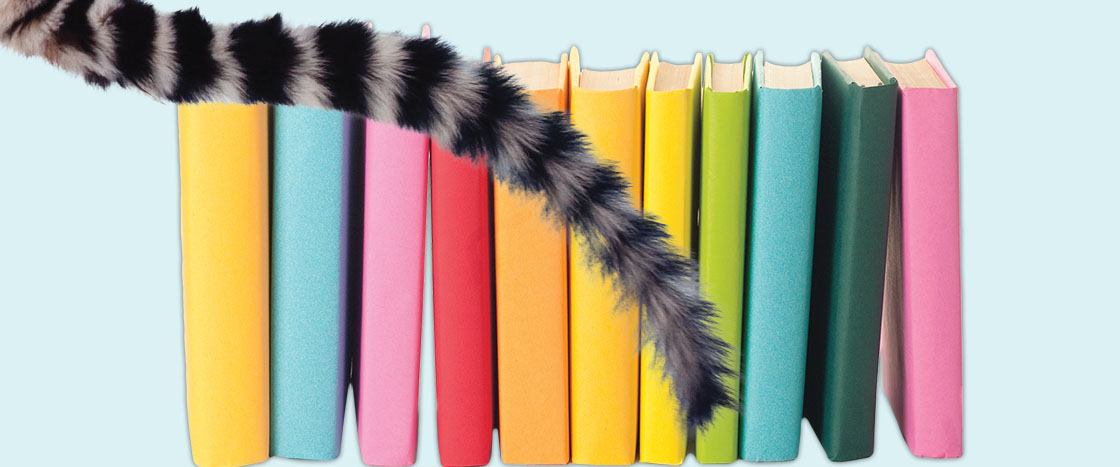The big escape happened in 2010 in North Carolina.
Two lemurs were missing! They had escaped from a lemur center. People saw them around town.
Then two kids saw the lemurs on their school lawn. They told a teacher.

Read a true story about lemurs in a school library.
Learning Objective: Children will compare fiction and nonfiction texts about lemurs.
Lemurs on the Loose
The big escape happened in 2010 in North Carolina.
Two lemurs were missing! They had escaped from a lemur center. People saw them around town.
Then two kids saw the lemurs on their school lawn. They told a teacher.
We Have the Lemurs
The Duke Lemur Center reminds kids not to touch or feed wild animals.
The school called the lemur center. The people from the center said they would come right away. But how could the school get the lemurs to stay put?
Lunch Lady to the Rescue
Lemurs living at the center
A lunch lady had an idea. She made a path with fruit. The path went to the school library. The lemurs followed it! In the library, they sat in chairs and ate fruit.
Soon people from the center came to get them. Yay!
Since then, the center has worked to make sure no lemurs escape again. It takes great care of lemurs!
More About the Article
English Language Arts Focus
Fiction vs. nonfiction
Science Focus
Animal behaviors
Implementation
Pairings and Text Connections
Before-Reading Resources
Suggested Reading Focus
Comparing fiction and nonfiction (20 minutes)
After-Reading Skills Practice
Skills: Key details; comparing texts (15 minutes)